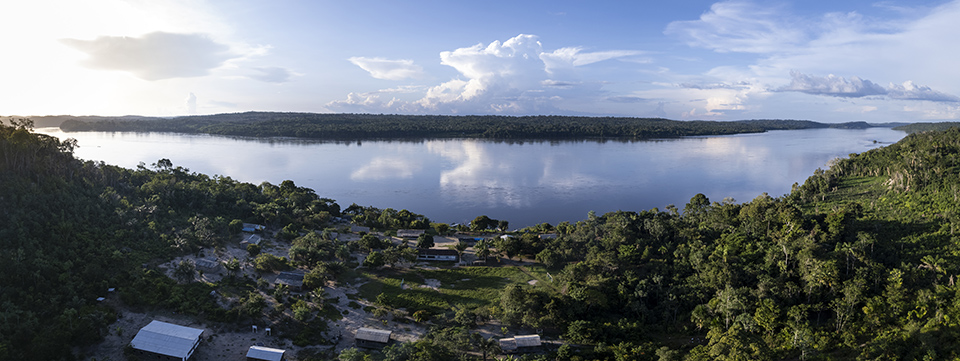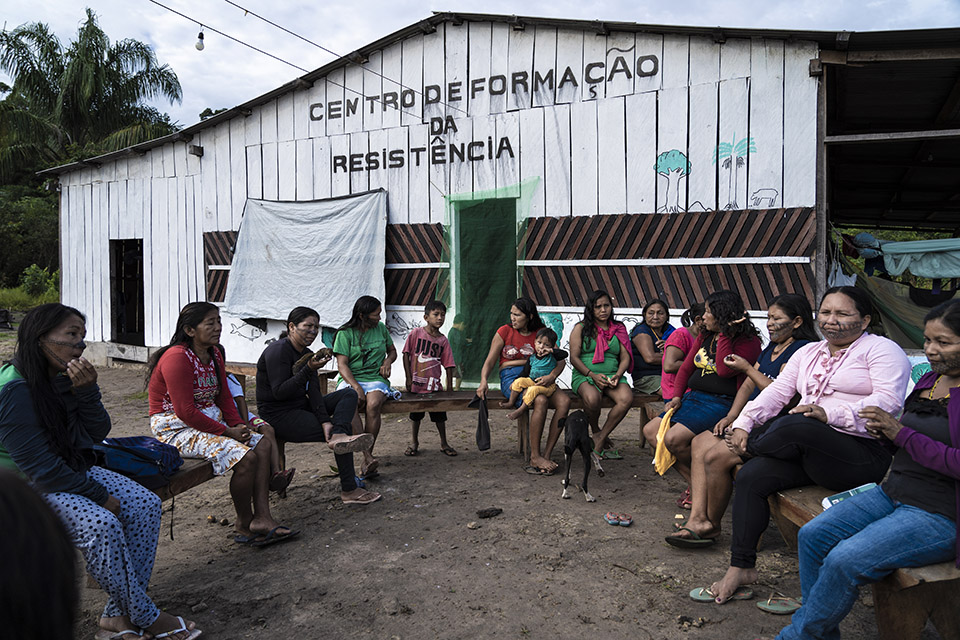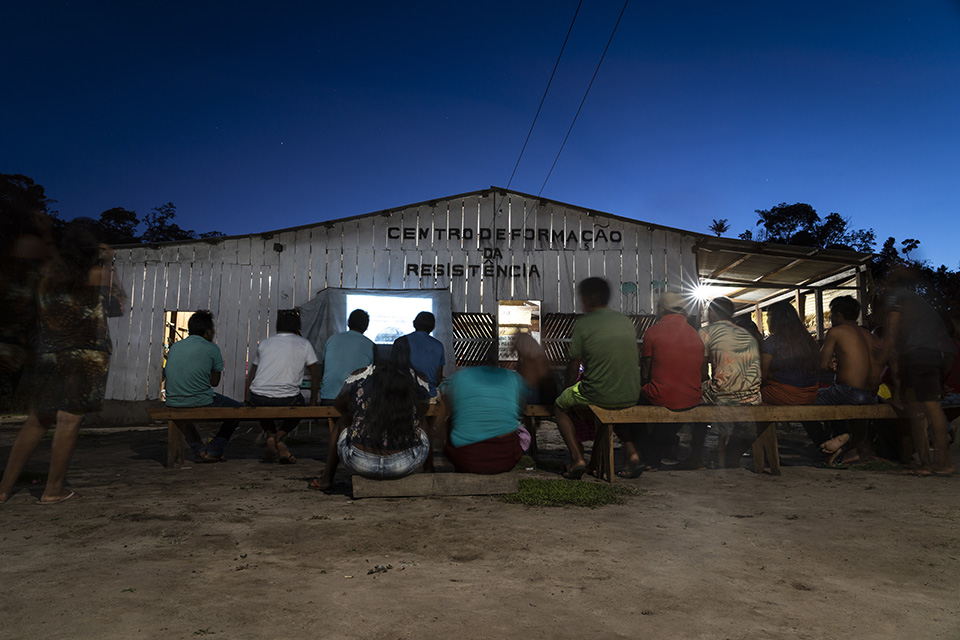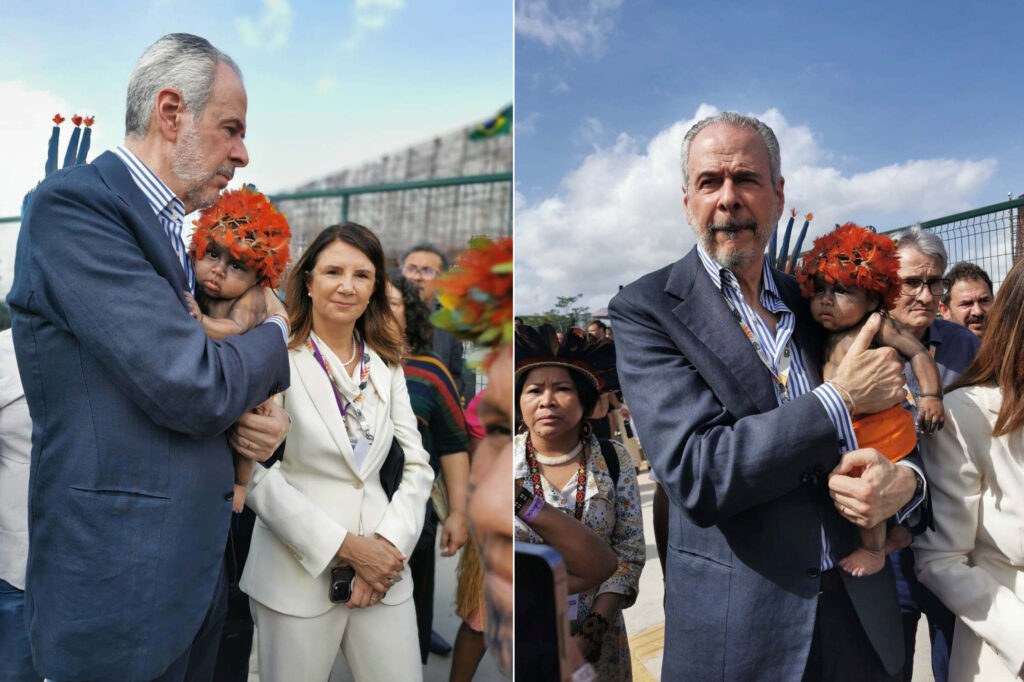Eleven-year-old Isaías* cannot speak and cannot walk; he is carried around by his father, who carved an armchair out of wood to make up for the lack of a wheelchair. Isaías’s siblings Hélio, 12, Vandir, 8, and Juliana, 5, cannot walk or speak either. Their arms and legs are wasted, and their knees are swollen and bruised from dragging themselves on the ground.
For years, doctors, health agents and family members have been seeking an explanation for a phenomenon that places the villages inhabited by the Munduruku indigenous people – on the border of the Brazilian states of Pará and Mato Grosso – at the top of the list of wheelchair requesters compared to other indigenous lands. In addition to children born with malformations and developmental delays, adults are blind and report tremors and weakness.
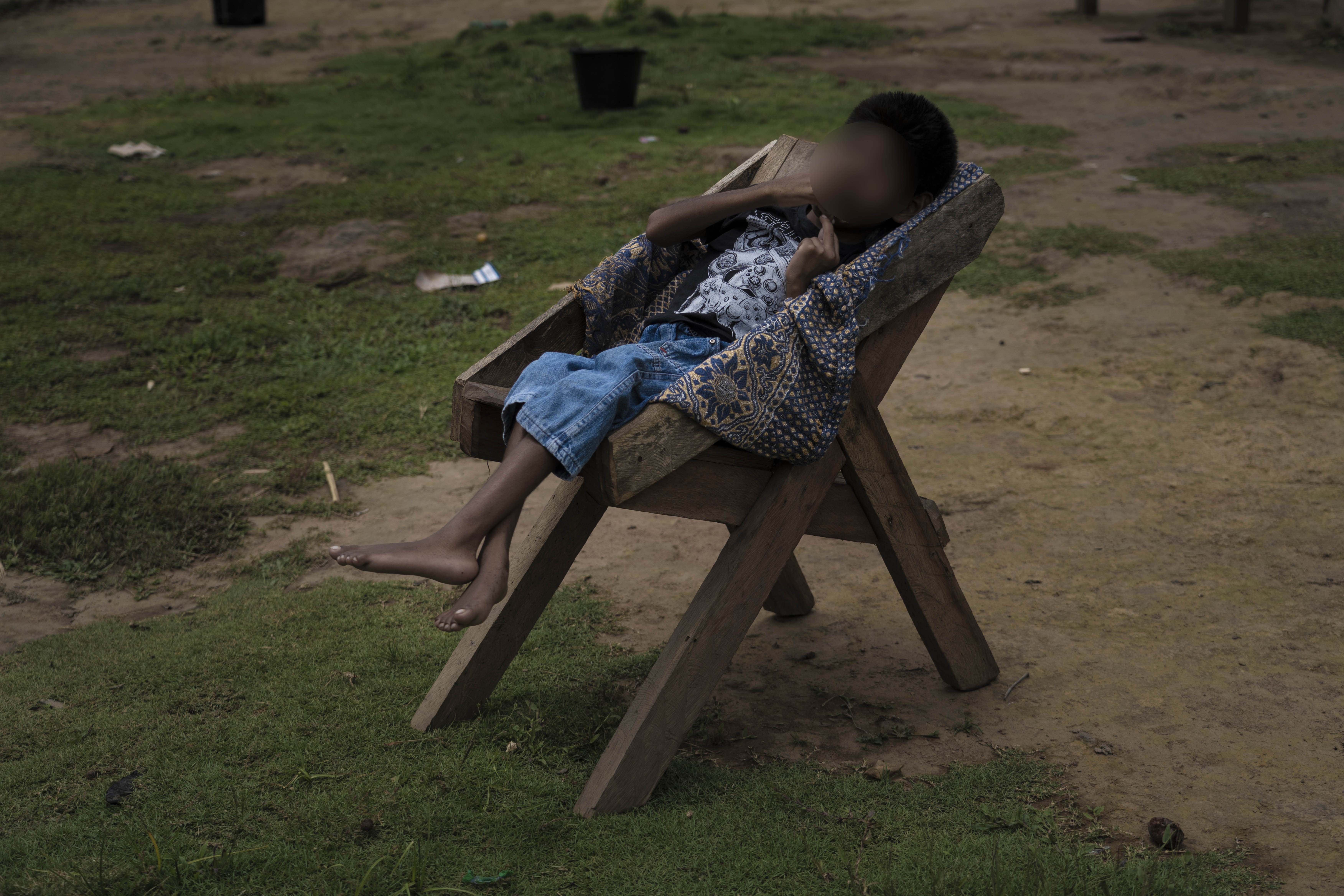
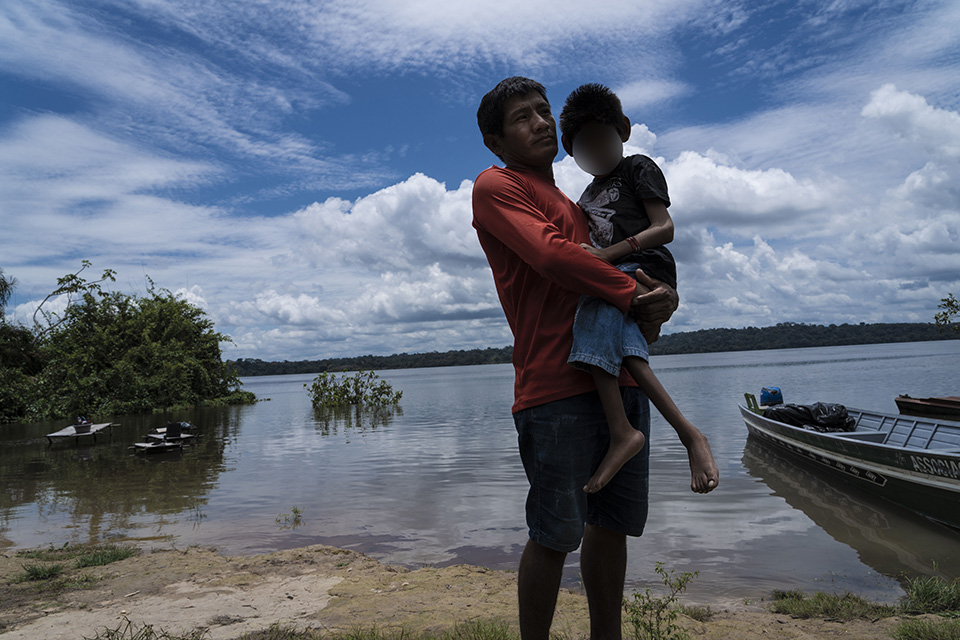
The main suspicion is that they are suffering the consequences of mercury contamination. With an estimated population of 14,000, the territory where the Munduruku live has been illegally invaded by wildcat gold mining since the 1980s. As a result, there was also an increase in consumption of mercury, which is used to separate gold from impurities but discarded without any concern for the environment.
“Children’s heads are getting soft, and their hands are like this [twisted],” says Chief José Edilson Akay from the Nova Trairão indigenous village, bending the fingers of his right hand. “A soft head means a child sick from mercury. We get scared,” explains Chief Luciano Saw from the Patawazal village.

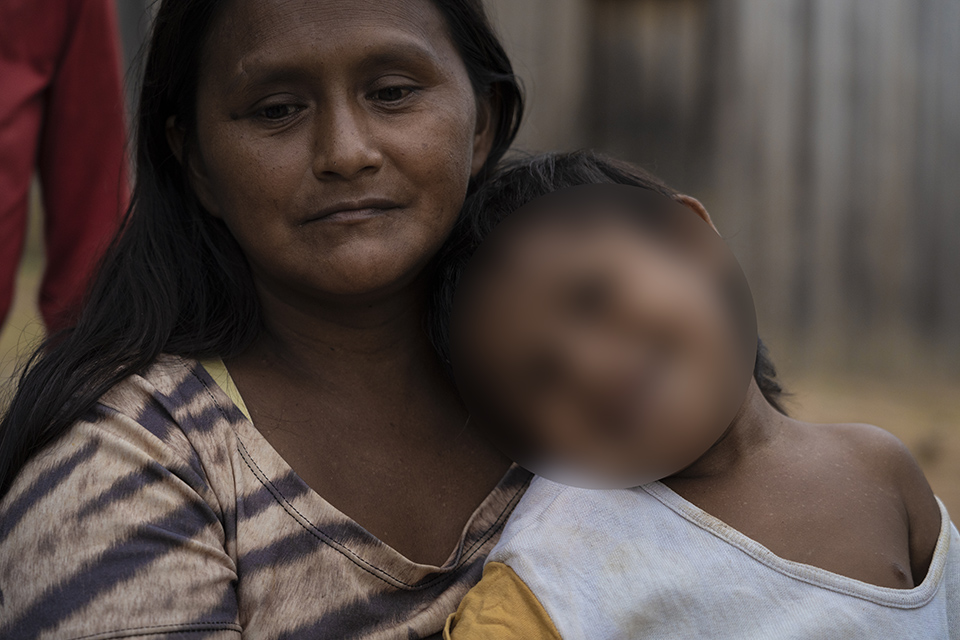
Mercury contamination occurs mainly through consumption of fish, the staple diet of the Munduruku people. The metal is dumped into the rivers and the ground by miners or is burned and evaporated during the gold separation process, and then it comes back with the rain. In pregnant women, mercury enters the placenta and contaminates developing foetuses up to seven times more than other people, causing irreversible damage.
“Why is this phenomenon so strong and frequent here in the Tapajós River region?” asks physician and Fiocruz researcher Paulo Basta. “It’s clearer than ever that the presence of mining in the territory has caused important changes in the population’s health,” he says. Basta is heading a study on the effects of mercury on pregnant Munduruku women and their children. The research team will monitor pregnant women and babies for three years, following a total of 250 new-borns from ten different indigenous villages.
The timing of the Munduruku, however, is more urgent than that of science. They cannot wait while their kids get sick from gold exploitation. The territory is the second most affected by illegal mining in Brazil, only behind the Kayapó Indigenous Land and ahead of the Yanomami territory.
In March, during a meeting of the Wakaborun Women’s Association, Repórter Brasil was authorized by Munduruku leaders to visit five villages in the Upper Tapajós area and interview sick residents and their families.
For a week, the journalists toured the Kabitutu, Kadiriri and Tapajós rivers with Munduruku chiefs and warriors threatened with death by miners for resisting exploitation. At each landing, their attention was drawn to the number of people with motor or neurological sequelae in small villages such as Karo Muybu, Jardim Kaburuá, Curimã, Pombal and Saw Bimuybu.

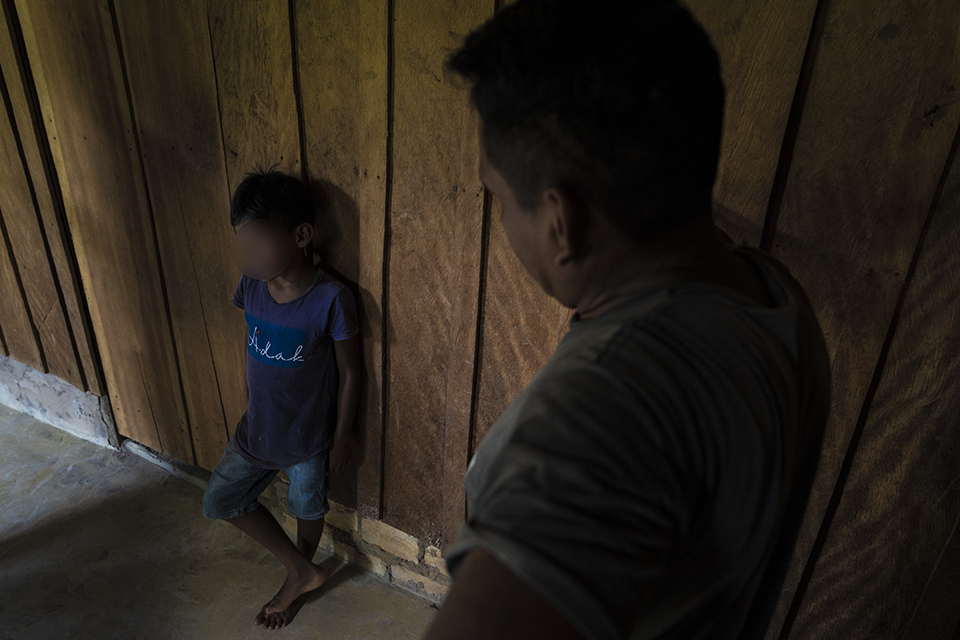
“This is the first time the press comes here,” said indigenous health agent Amarildo Kaba from the Jardim Kaburuá village. Amarildo himself feels pains that resemble mercury contamination. “A lot of cramps in my legs; I started to lose strength, and after a while I started to soften. To this day, I haven’t figured out what it is.”
The symptoms are similar to those described by Josiel Poxo about his son, 8-year-old Diogo Elias Poxo. “He started crying and didn’t get up anymore. He kept contracting his hands and his leg started thinning. He couldn’t play,” the father recalls. The boy even spent three months lying down all day, but then he started walking again. “But he can’t write at school, and he can’t speak. He plays a little now, but he falls,” Josiel describes.
In the same village, Rosita Tawe says her son, Daniel Karo, 5, doesn’t speak at all. “Something in his throat does that to him.” The boy has already been treated by a doctor, but his mother doesn’t know what causes his muteness.
The interviews are translated by young women from the audio-visual collectives Wakabourun and Daok, from different regions of Mundurukânia – as they refer to the territory formed by the Indigenous Lands (ILs) Sai Cinza, Munduruku, Sawre Muybu, Sawre Bap’in, Praia do Índio and Praia do Mangue in the Tapajós Valley, which extends from northern Mato Grosso to Pará.
The young women are the armed branch of the resistance to mining – they are armed with cameras, cell phones and drones. They are making a documentary about mercury contamination whose title is ‘Awaydip Tip Imutaxipi’ or ‘The sick forest.’ There could be no better synthesis.
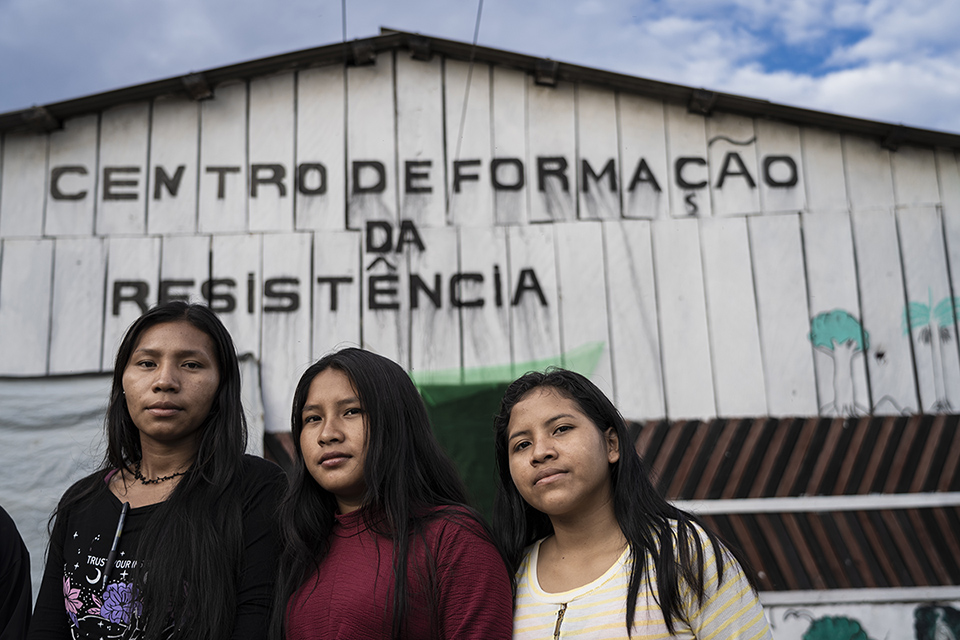
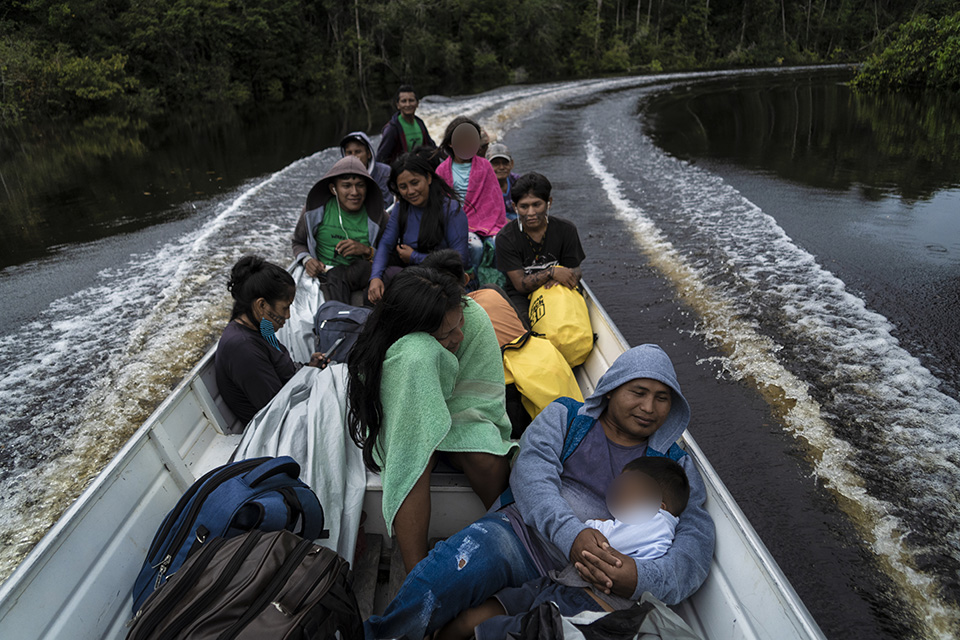
An old problem
An indigenous health professional who works with the Munduruku and asks not to be named reports that the teams noticed an increase in the number of children with neuromotor problems in 2009. “I worked with a pregnant patient in a territory with high concentration of mining. Her daughter was born and died right away, with characteristics similar to Minamata disease,” he says.
Minamata disease is caused by mercury contamination. It was named after a disaster in the Japanese city of Minamata, where about 20,000 people were contaminated as a result of irregular disposal of hundreds of tons of methylmercury from 1930 onwards. The disaster led to the Minamata Convention in 2018, to which Brazil is a signatory and which aims to protect human health and the environment.
Another study by Fiocruz in partnership with WWF revealed that Munduruku indigenous people and fish from the area were contaminated by mercury above maximum permissible levels. The study also showed that contamination is higher in areas with more mining.
According to that health professional, the Tapajós River Special Indigenous Sanitary District (DSEI), which includes the Munduruku lands, is the record holder for wheelchair requests, most of which are for children born with brain malformations. “In 2012 we requested around 80 wheelchairs. But several of those children have already died,” she says. Last year, there were another 63. Asked to comment, the Ministry of Health did not respond.
But the wheelchair has not come for Isaías Oyoy. At age 11, he is the only one who was born with a congenital malformation among the six children of Valdenilson Oyoy. Isaías was bathing in the Tapajós River when the reporters docked the boat in Pombal village. To get out of the water, he extended his arms for his father to carry him. Without the wheelchair, the father had to make an adapted wooden chair to help support his son.
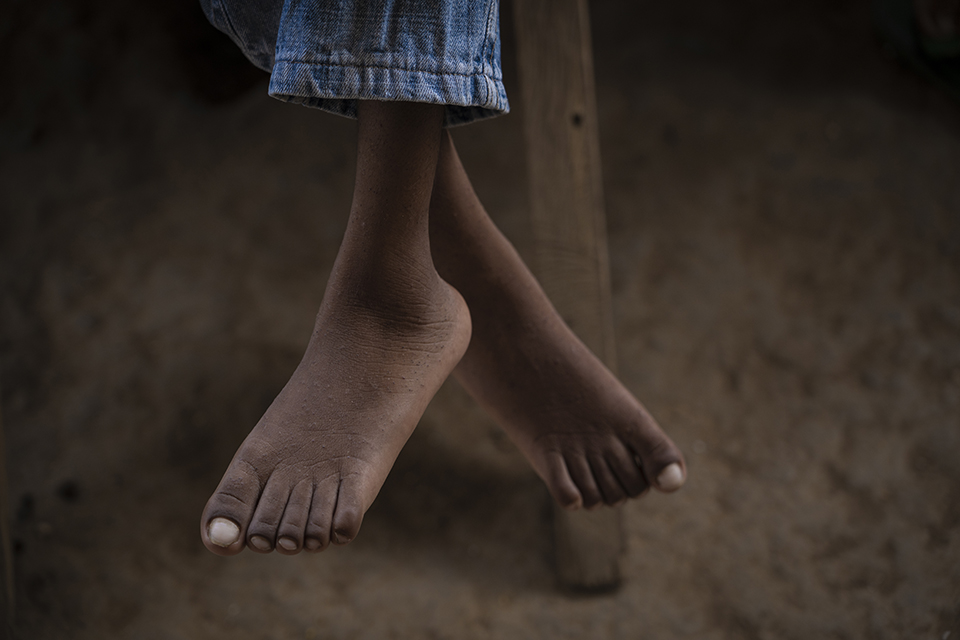
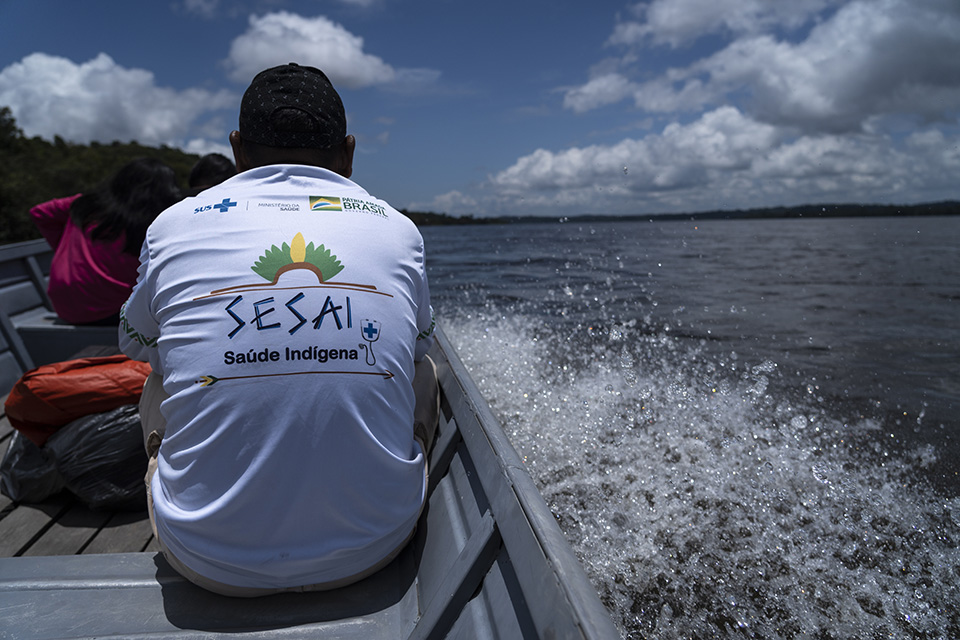
Living in the Curimã village, Clebentino Poxo and Dulcinéia Saw have four children. Three of them have congenital malformations and cannot walk or speak. Juliana, 5, struggles to keep her neck up; Vandir, 8, has contracted fingers; and Hélio, 12, has wasted feet.
Also without wheelchairs, they crawl on the ground when they cannot be carried by their parents or by their 10-year-old brother Gabriel, who is blind in one eye. Parents don’t know what made their children ill. “I also don’t know if they feel any pain, because they can’t speak.” The name of the village – Curimã – means a decommissioned mining site.
“This is caused by mercury. There’s no use hiding it,” says the leader of the Munduruku warriors, Bruno Kaba, who stays with us during the interview, pointing to the children sitting on a bench.
Blindness, tremors and weakness
In the first village we visited – Karo Muybu – on the banks of the Tapajós River, residents complain that their children feel itchy after bathing in the stream, which has been contaminated by waste from a nearby mine. Two sisters, Margarete and Olivia Karo, aged 48 and 40, lost their sight late in their childhoods. “I started to feel pain and it felt like I had cooking oil in my eye,” says Margarete. They have already been seen by doctors and underwent tests in the city of Jacareacanga, but they never learned why they are blind.
In adults, mercury is deposited mainly in the occipital lobe, located at the back of the head, which controls vision, explains Fiocruz’s Paulo Basta. The doctor is interviewed in Itaituba, almost 500 km from the village, where Fiocruz was training indigenous health agents about the effects of mercury on health.
Once in the rivers, the metal is transformed into methylmercury, which is even more toxic and enters the food chain of all water creatures. Large fish that feed on smaller ones accumulate greater amounts of the substance. In the body, methylmercury’s preferred target is the central nervous system. In addition to affecting vision, it can cause chronic headaches, tremors, ringing in the ears and a metallic taste in the mouth, Basta explains. Contaminated people may have difficulty climbing stairs or taking walks, as they lose strength in their feet and hands.
Luiza Kirixi is 26 years old. She can’t hold back the tears when telling how she lost the strength in her legs and arms. Weakness started four years ago, when she was carrying a bag of cassava towards the village’s flour mill and fell. The pain started in one leg, spread to the other and now affects her hands, which are twisted. “Some days I can’t get up from the hammock. My husband has to help me,” she complains. “I’ve felt so much pain that I thought it was the end, that I was going to leave my husband and children,” she says, crying.
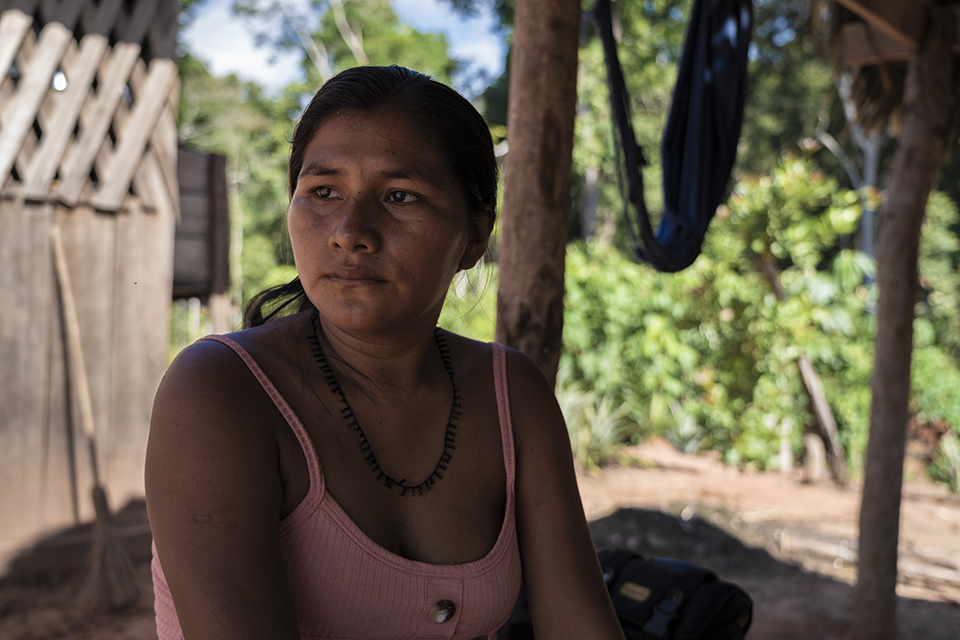
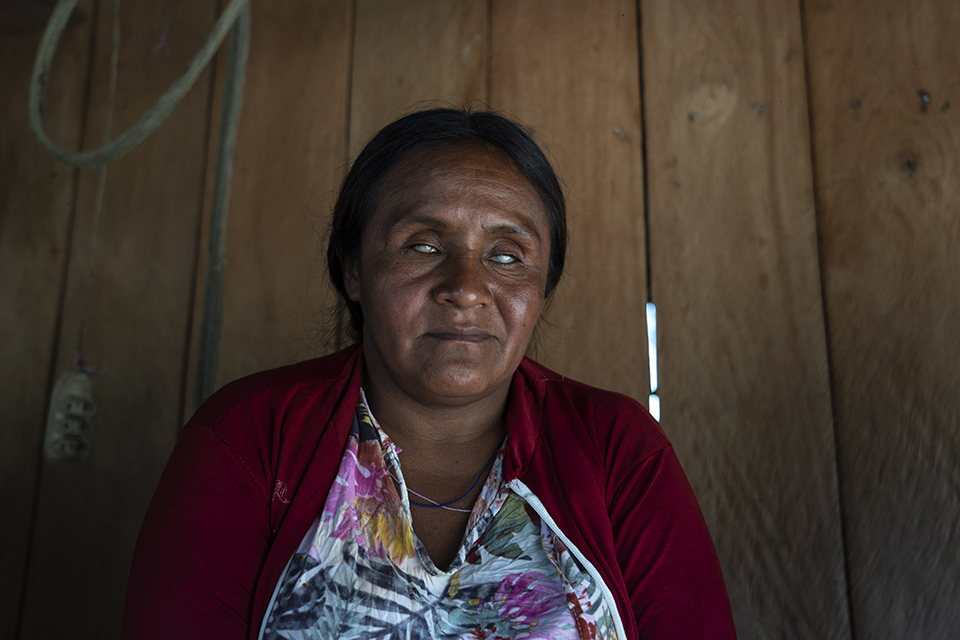
A doctor told her the problem is rheumatism, but her husband Creudiano Saw, 29, does not believe it: “When people get sick like that, it’s either malaria or mercury.” The couple has four children and lives in a new village on the banks of the Tapajós River, Saw Bimuybu, with six other families.
Similar symptoms affect 19-year-old Genilson Karo from the Jardim Kaburuá village. He’s only been to the doctor once, but did not find out what he had, according to his mother, Madalena Cogo. “He was soft and couldn’t sit. I gave him baths with vine root medicine and now he can sit up,” she says.
In a note, Brazil’s Ministry of Health stated that it is monitoring populations exposed to mercury in order to comply with the Minamata convention but did not provide any details about the operation. They also said that they have added 117 doctors to the teams of the 34 indigenous health districts – four of which in the Tapajós River DSEI. Funai informed that it plans to carry out combat actions to remove the miners from Munduruku lands, but it cannot provide details as this involves sensitive information and intelligence data (see statements). Asked to comment, the Ministry of Indigenous Peoples did not respond.
Fiocruz is an institution linked to the Ministry of Health that is at the forefront of the struggle against mercury. Early this month, Basta’s team submitted a plan to eradicate mercury contamination to the Minister. The proposal, prepared in partnership with the Federal Public Defender’s Office and WWF-Brazil, will be debated by the ministry in a working group on actions for the Amazon.
Resistance to mining
On the way to the Jardim Kaburua village, passing by the Kabitutu river, a sign with the fees charged from miners stands out. Crossing the river on a ferry barge carrying an excavator will cost R$ 6,000; a motorboat transporting passengers costs R$ 150 – and R$ 200 with fuel. The improvised tollhouse shows the permissiveness of some Munduruku towards illegal mining. They get money, even if they pay a high price that threatens the future of the group, with children as the main victims.
But while there is some connivance, resistance is huge. And that is exactly what they call themselves: ‘The resistance.’ At least 18 Munduruku are threatened with death and are in protection programs for not accepting the invasion of their territory. They are chiefs, warriors and, above all, women, who organize, denounce and try to convince their relatives to resist the mining money temptation.
Maria Leusa Kaba Munduruku is one of them and she pays a high price for that. She and her mother had their house burned down by miners in retaliation after a Federal Police operation against illegal mining two years ago. Earlier, the headquarters of the association she heads – Wakaborun – had been vandalized and burned in the urban area of Jacareacanga. “Those who resist lose their freedom. They try to kill us, but we stand our ground,” she says. After the attacks, the resistance gained more support, rebuilt the association’s headquarters in the village of Novo Trairão, and demanded strong action from the current government in the territory.
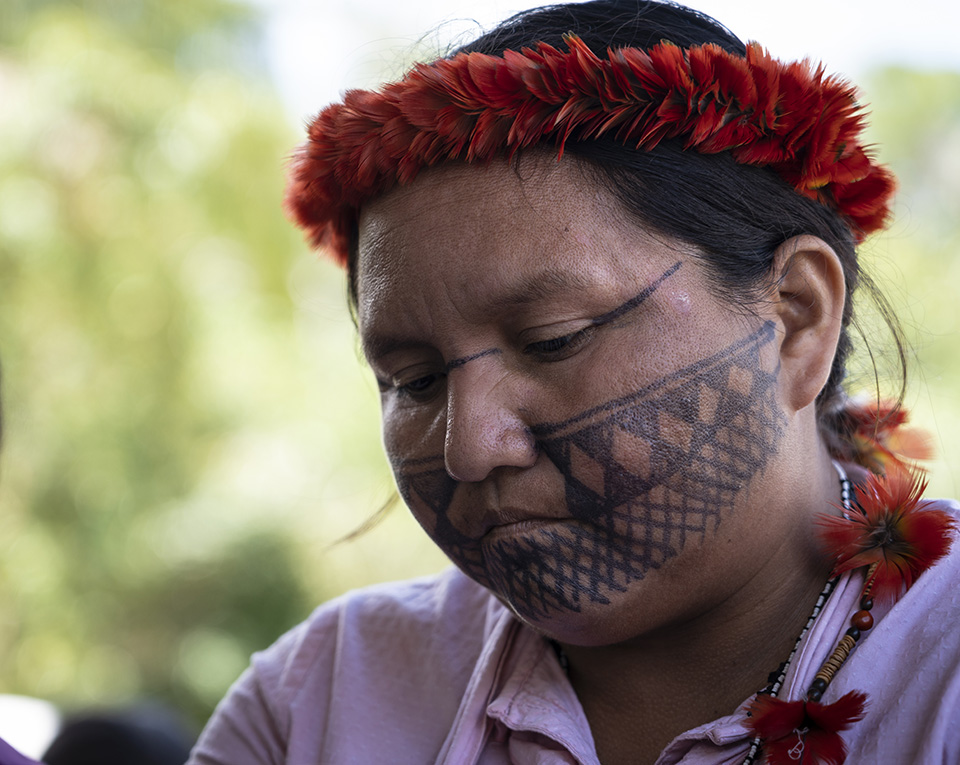
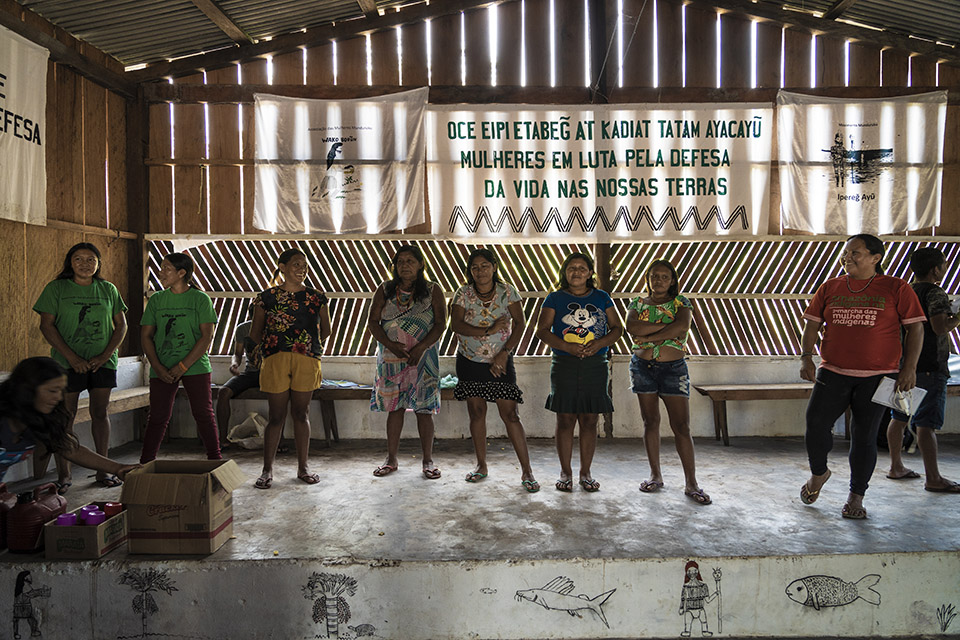
For Leusa, the Federal Police has to be in Jacareacanga all the time, as well as protection fronts spread throughout the indigenous lands where the Munduruku live. She also asks that not only specific actions be carried out. “That just provokes our enemies to kill us and burn our houses,” she says. She is afraid: “Dying in the struggle is no shame, but I have to stay alive, because the struggle is long.”
Even with the change of government in Brazil, Leusa points out that violence continues, as well as miners’ invasion. “People are still sick inside the territory.” She has a 4-year-old nephew who cannot walk and cannot talk. While there is no final diagnosis, it is suspected that he is yet another victim of mining’s mercury. “I’m a mother and a grandmother, and I need to keep going, because what is at stake is the future of my children and grandchildren. A future without greed and without disease.”
